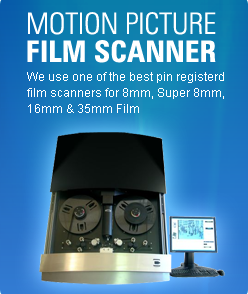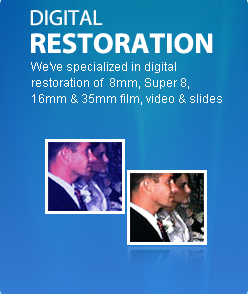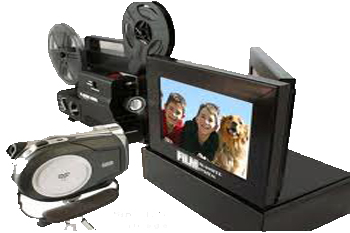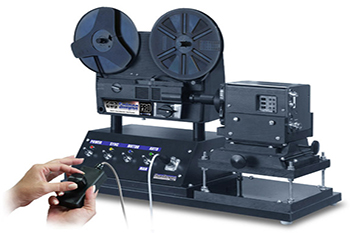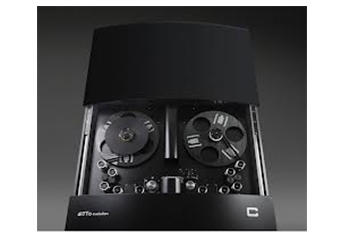
Film Conversion Equipment
Film Scanning and Film Transfer Equipment Types
The type of film scanning machine used for your 8mm, Super 8 or 16mm film conversion will have as much of an impact on the quality you receive as the resolution of the scan itself will. For example, if you wanted to digitize a photograph and tried doing it two different ways. You first put the photograph down on a table and took a picture of it using your smart phone or camera. Then you took the picture and scanned it using a flatbed scanner. If you compare the two side by side on your computer it will become really obvious that the flatbed scanner produced a digital image as good as the photograph. However, the picture you took with your phone or camera does not look close to the quality of the original photograph.
The same goes for scanning your 8mm, Super 8 or 16mm film. The real-time and frame by frame machines below are using a camcorder to take a picture of your film. The motion picture film scanner and Datacine machine are scanning the film. The results will be significantly different.
Film Conversion Equipment |
|
Real Time
|
|
Frame by Frame
|
|
Professional Film Scanners
|
|
Equally important as resolution is the type of film transfer. There are a few basic types of film transfer processes. More than 80% of the companies out there today use a real-time transfer. Any type of real-time film transfer will result in video that is 40-50% worse than the film’s current condition.
So, at this point you’ve learned that film transfers can capture at standard definition (480 lines), high definition (1080 lines) or 2K (1556 lines). You’ve also learned about the 3 different types of film transfers being used today. In order from least to best quality we have:
Topeka Fun Facts: In 1995, the Santa Fe merged with the Burlington Northern, becoming the Burlington Northern Santa Fe Corporation. Since that time, the company has since changed its name to BNSF Railway Co. One of Topeka's claims to fame dates back to 1951 when Linda Brown was responsible for eliminating the standard of "separate but equal". She was the named plaintiff in Brown v.
Kansas Fun Facts: Frank Baum’s classic children’s book The Wizard of Oz. Kansas, situated on the American Great Plains, became the 34th state on January 29, 1861. Its path to statehood was long and bloody: After the Kansas-Nebraska Act of 1854 opened the two territories to settlement and allowed the new settlers to determine whether the states would be admitted to the union as “free” or”slave,” North and South competed to send the most settlers into the region. This quickly led to violence,and the territory became known as “Bleeding Kansas.” Kansas has long been known as part of America’s agricultural heartland, and is home to the major U.S.
